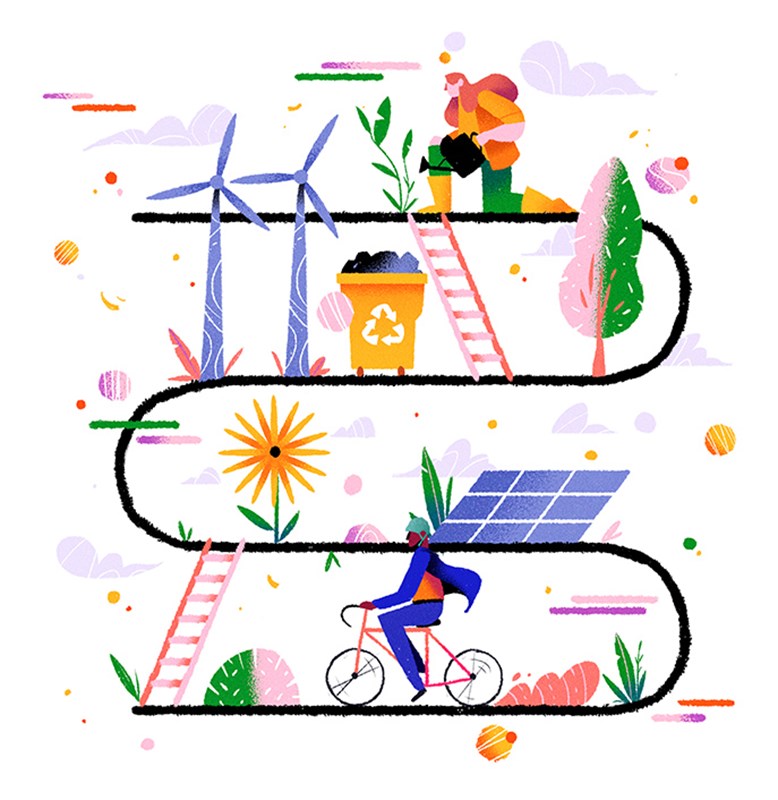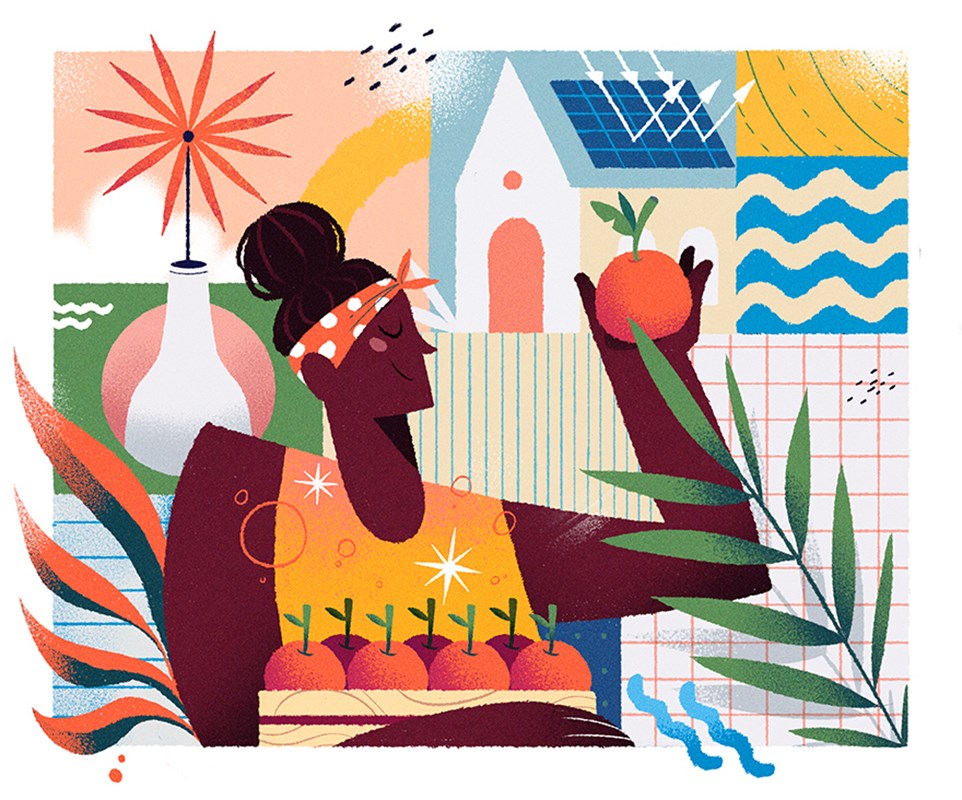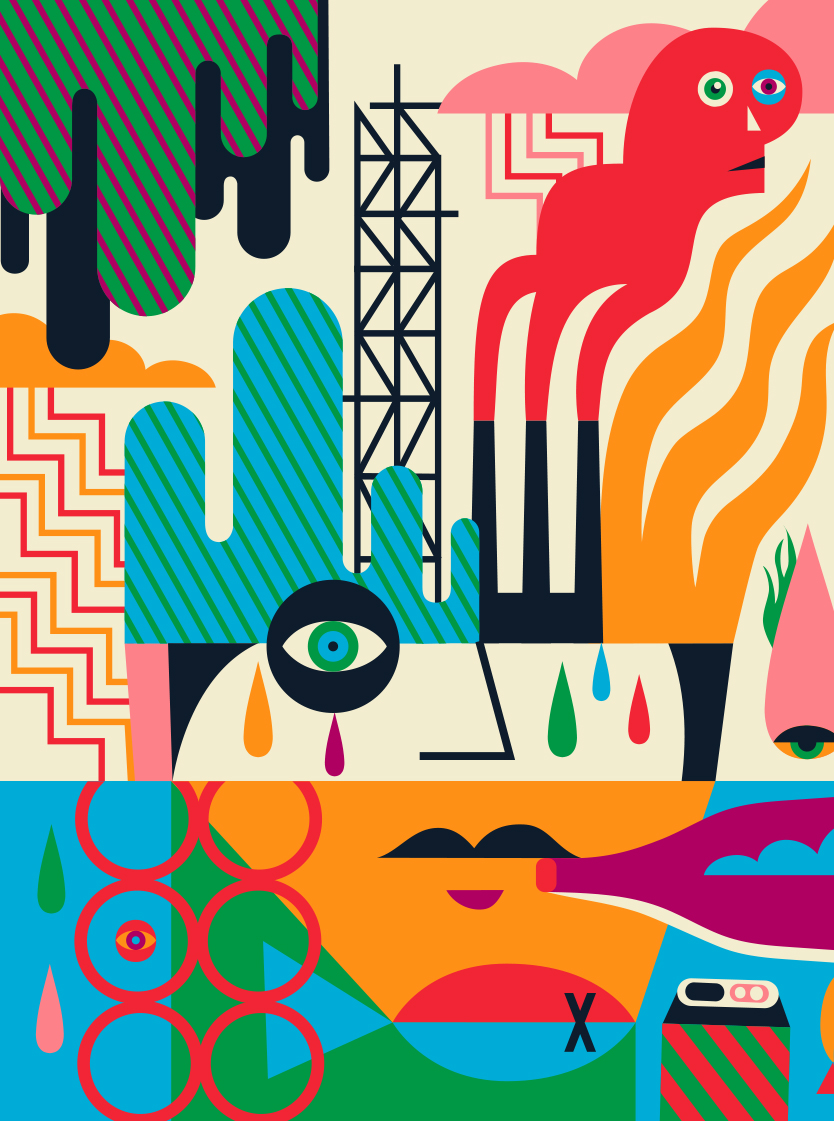Co-building a conscious society
By Navi Radjou

Rodrigo Cordeiro

Author, scholar, and innovation and leadership advisor, Navi Radjou, writes that his generation has the power to set things right, and is already planting the seeds for a new conscious society with its ingenuity, empathy and combined wisdom: a society that maximises well-being and human potential for the benefit of everyone.
What if we could transmute people’s angst and dissatisfaction — prevalent worldwide today —into creative energy, and channel it to build a better society? A new society that seeks not to maximise wealth for a few, but to maximise the well-being and unleash the potential of all. A new society that doesn’t waste resources but uses them responsibly. Such a society is no utopia. It’s already emerging around the world. It is being built from the bottom-up by empowered citizens, visionary entrepreneurs, and progressive businesses and policy makers. The raw materials used to build it are not technology or money, but human capabilities like ingenuity, empathy, and wisdom. Let me take you on a global tour to introduce some pioneering experiments building this new society:
Loos-en-Gohelle: This former mining town of 6,700 people was, until recently, one of France’s poorest and most polluted. But under the wise leadership of Mayor Jean-François Caron, it is boldly reinventing itself as one of the world’s most sustainable places. It installed solar panels on the roof of its its church and schools, switched to organic farming, and set up an incubator for ‘circular economy’ startups, the very first in Europe.
Mumbai: Dharavi in Mumbai is Asia’s largest slum, where 200,000 under-privileged citizens are gainfully employed in recycling 80 per cent of the city’s waste. Dharavimarket is an online platform that works with NGOs to train the youth and women in Dharavi to ‘upcycle’ waste to become beautiful household products that they can sell to customers worldwide.
Philadelphia: The Penn Medicine Center for Digital Health (CDH) researchers created a crowdsourcing platform that analyses five million COVID-19 related tweets a day to track and report in real-time self-reported symptoms and people’s feelings across the US. This platform can predict the next COVID-19 hotspot areas and measure the pulse of mental health in communities across the US, thus enabling proactive government interventions.
New Zealand: In 2019, under Prime Minister Jacinda Ardern’s visionary leadership, New Zealand passed a budget that prioritises citizens’ well-being rather than economic growth, by focusing on mental health, poverty reduction, empowerment of minority groups, climate adaptation, and inclusive digitisation. Not surprisingly, the United Nations has ranked New Zealand as one of the world’s happiest and most resilient nations.

Oslo: While Silicon Valley is obsessed with self-driving cars, the capital of Norway plans to gradually eliminate all private vehicles in the city centre by creating a 100 per cent emission-free public transportation network. Norway is also investing $1 billion in a new network of bike highways to keep citizens physically active.
All of these inspiring examples are real-life experiments under way to build what I call a ‘conscious society’, a caring and regenerative social ecosystem in which each individual is empowered to maximise his or her own, and others’, well-being and potential through creative and wise use of all resources.
A conscious society is a blueprint for reinventing societies for the 21st century, that invites all stakeholders to collectively find answers to two essential questions:
What is our society’s raison d’être, i.e., why does our society exist in the first place?
What should be our society’s development trajectory, i.e., how should our society progress and evolve over time?
What makes a conscious society unique are its three fundamental guiding principles:
1. Quality (of life) is valued more than quantity (in life)
People equate wealth and prosperity with abundance of well-being rather than material possessions. Realising one’s fullest potential — and helping others realise theirs — becomes the ultimate goal in one’s life.
Society’s growth is measured by an integrated set of economic, social, environmental, and health indicators. Holistic long-term development is privileged over short-term growth.
2. Make the most of what you have…locally
Scarce resources (water, land) are used creatively and efficiently to generate more output with fewer inputs. Physical and digital assets and goods are shared widely as well as recycled and regenerated continuously, thus curbing all waste.
Abundantly available tangible resources (renewable energy) and intangible ones (ancient knowledge, social capital, ingenuity, spiritual traditions) are harnessed to address the needs of everyone in an inclusive and sustainable manner.
Hyper-localised supply chains (e.g. micro-factories, urban farms, energy-positive buildings) cut waste, create local jobs, preserve traditional knowledge, and make communities self-reliant.
3. Everyone is an innovative value creator
Passive customers become creative ‘makers’: they produce electricity and food in their neighbourhood and make their own products using 3D printers.
Diversity is treated as an asset: like an alchemist, everyone is empowered to turn adversity into an opportunity to innovate and create value for society. No one is left behind.
Work becomes a source of self-realisation; the workplace is a nurturing environment to actualise one’s full potential and help others develop and express their gifts and talents.

These three principles collectively form the solid pillars of a conscious society where everyone is empowered to maximise their well-being — and that of others — to lead meaningful lives.
I previously listed a few examples of conscious societies emerging worldwide. This is just the beginning. I predict dozens, if not hundreds, of conscious societies will arise over the next decade, in every corner of our planet.
The rise of conscious societies throws up a host of questions: What kind of companies do we need in our conscious society? How do we reinvent government? And, what is the role of citizens groups in fully realising a conscious society?
In fact, we need to think beyond the silos of business, government and non-profit by forging broader alliances across sectors. This means that big institutions — corporations and governments — will need to fundamentally reinvent themselves.
Let’s start with businesses. Rather than think/act narrowly as Business-to-Consumer (B2C) or Business-to-Business (B2B), corporations must operate as a Business-to-Society (B2S) entity to best serve all stakeholders. They must evolve from making goods, to doing good, to being good.
For instance, the consumer goods multinationals Unilever and Danone, and the industrial services leader Siemens are all committed to making sustainable products that pollute much less while delivering greater social value to billions of people through access to affordable health, clean water, nutritious food, and renewable energy. They even share their innovative technologies with other companies, including their rivals, with the goal of multiplying these gains throughout society. This focus on society motivates Unilever, Danone and Siemens employees and partners to surpass themselves to serve a larger purpose.
“A conscious society can’t be built overnight”
Navi Radjou
Governments also need to rethink how they work in a conscious society. To win back citizens’ trust, they should treat citizens as more than just passive voters. They must empower citizens and tap their ingenuity and expertise to co-create nimbler and user-friendly public services. This bottom-up engagement is a cost-effective way to improve the quality of life and resilience in local communities. For instance, when Hurricane Sandy hit New York in 2012, FEMA — the US federal agency in charge of disaster management — and the Field Innovation Team worked with a group of local hackers to rapidly restore internet connection and redesign the disaster recovery centre for quicker assistance to survivors. They did it much faster, and more cost-effectively, compared to top-down aid organisation methods.
As cataclysmic natural disasters multiply in coming decades due to global warming, federal and regional government agencies across the world must humbly co-lead climate change mitigation and adaptation efforts with local NGOs and citizen groups, as FEMA did.
A conscious society can’t be built overnight. It is not like a ‘Manhattan Project’. Rather it will take a series of experiments and iterations to mainstream the concept that informs everything we do: how we create, work, live, and govern. But it is certainly a journey worth undertaking.
Once in a century, a generation gets the rare opportunity to radically change the course of history. I feel privileged to be part of a generation that has the power to set things right and hand over a better society and planet to future generations.
I chair the advisory committee of STEAM School, a two-week long annual programme that brings together 100 designers, engineers, students, and entrepreneurs — mainly from India and France — to co-create robust solutions to address the United Nations Sustainable Development Goals (SDGs) in energy, healthcare, food, and resilient cities. The programme enables STEAM (Science, Technology, Engineering, Art, and Maths) education through hands-on problem-solving and cultivates cross-cultural empathy and self-awareness among participants.
Business and political leaders worldwide must invest in local STEAM schools to train a new generation of innovators with an entrepreneurial mind, a social heart, and an ecological soul who can co-build conscious societies that maximise the well-being and potential of all citizens, while making wise use of all resources.








